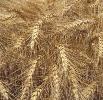October 14, 2010

Recurring disease problems – ear rot and stalk rot in corn in 2009 and head scab in wheat in 2010 – may pave the way for continuing issues if weather conditions favor head scab development during the 2011 growing season, according to Pierce Paul, an Ohio State University Extension plant pathologist.
"Wheat and corn are both members of the grass family, and as such, are affected by some of the same pests and diseases, one of which being head scab," says Paul.
Head scab, a major disease of wheat that affects the crop during the flowering stage, is caused by the same fungus (Fusarium graminearum) that causes ear and stalk rot in corn.
"So even if the cornfield into which wheat is planted did not have a major ear rot or stalk rot problem this year, the fungus still is present in the corn stubble left in the field after harvest. In addition we had high levels of scab and vomitoxin in some parts of the state this year largely because most of our wheat varieties are susceptible, spores hung around from the ear rot problem we had in corn in 2009, and favorable weather conditions promoted disease development," says Paul. "So wheat planted into this stubble is more likely to have a head scab and vomitoxin problem next year, especially if conditions are favorable."
The key message: plant wheat after soybeans, not after corn.
"The production practice is one of the best ways of minimizing losses due to head scab and vomitoxin in wheat," says Paul.
If it's essential to plant wheat following corn, Paul urges growers to plant a scab resistant variety.
"In addition, plow under the corn stubble before planting wheat and be prepared to apply a fungicide next year at flowering if the weather becomes favorable," said Paul. "These approaches will minimize, but will not eliminate the risk of head scab in wheat planted after corn."
You May Also Like




